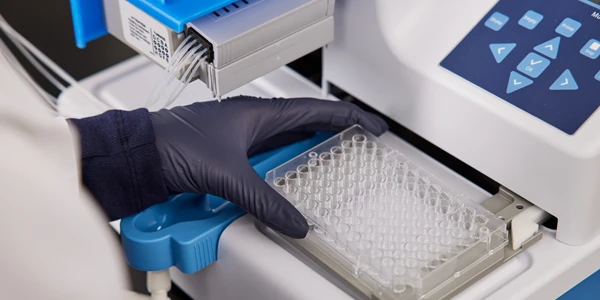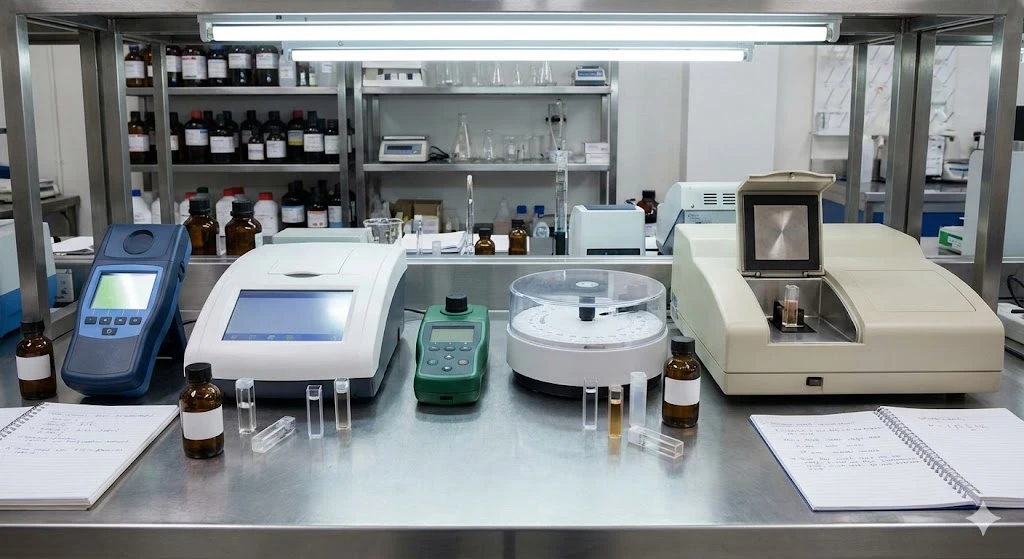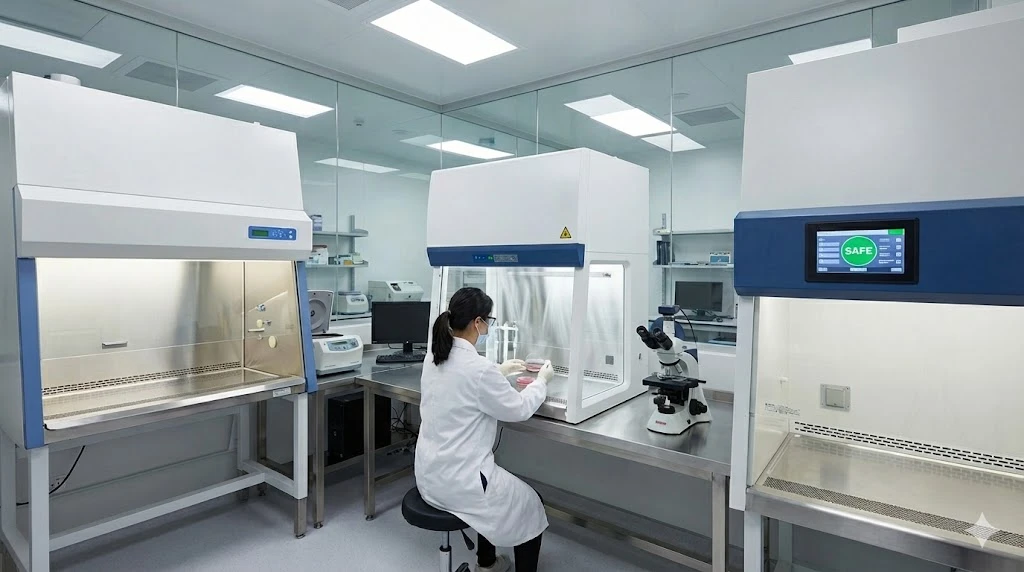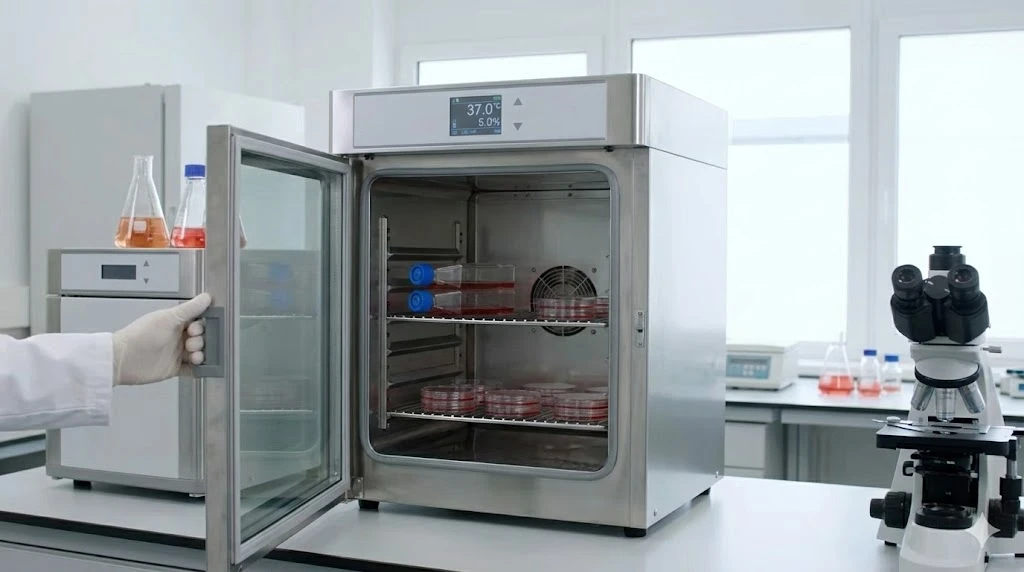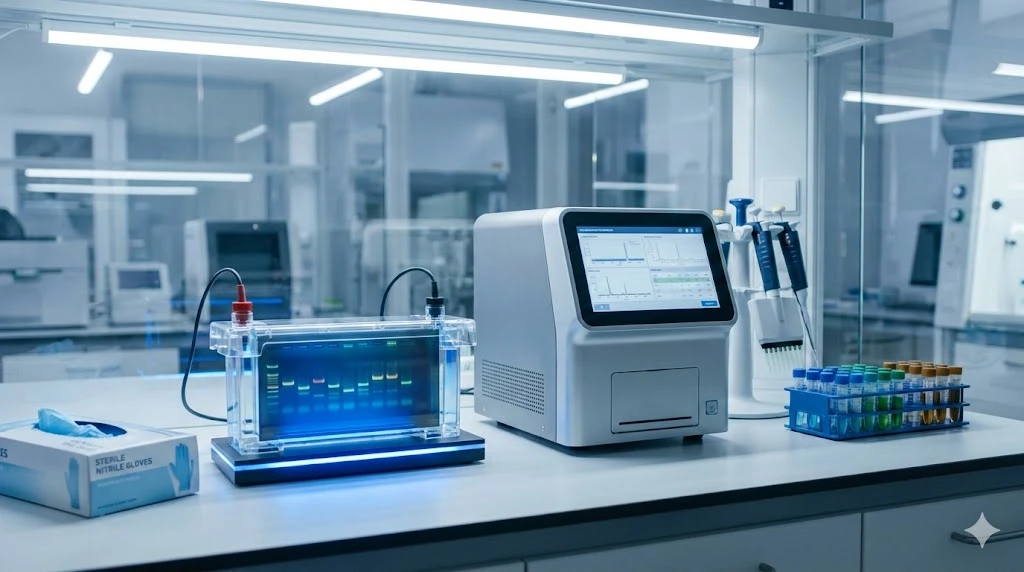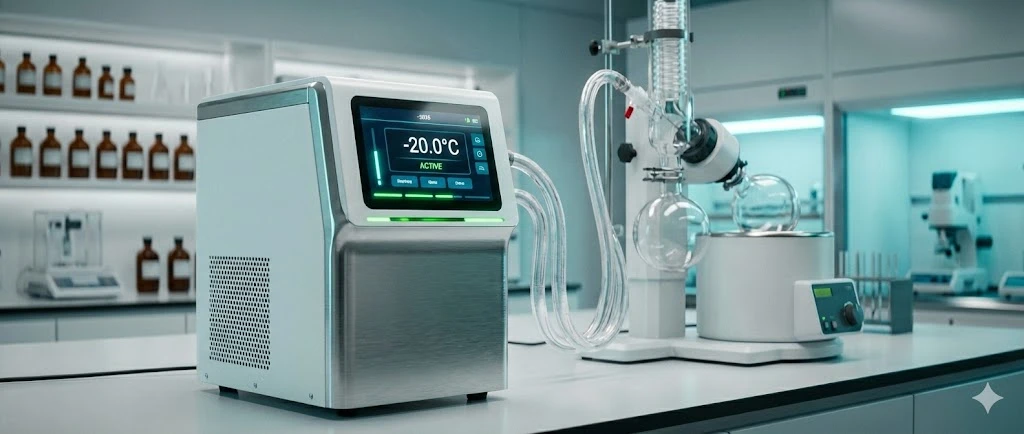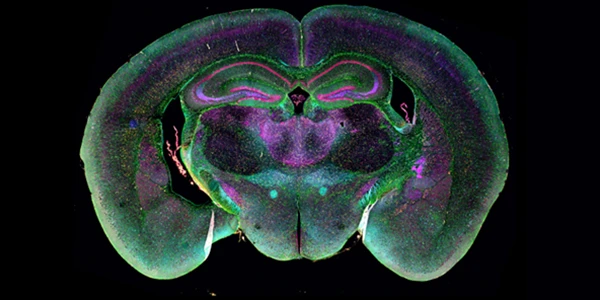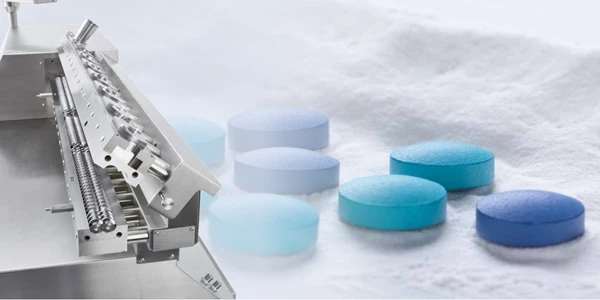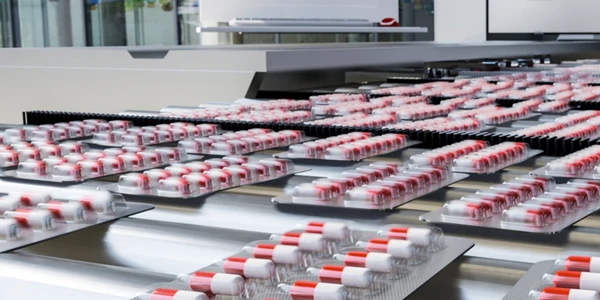The 2023 ASMS Conference: Back in Spectacular Form
The stage was set for the ultimate meeting of the mass spec minds. Excitement was palpable, and optimism was high that this would be the best ASMS annual conference in years.
Indeed, the meeting, which was held June 4th through 8th in Houston, TX, brought out the best in many respects. The show delivered not only the live vibe enthusiasm but showcased the breadth of research and industry developments true to ASMS form.
New Products and Technologies
The week
began with the procession of press conferences aimed at informing the press
about the latest products and new technologies.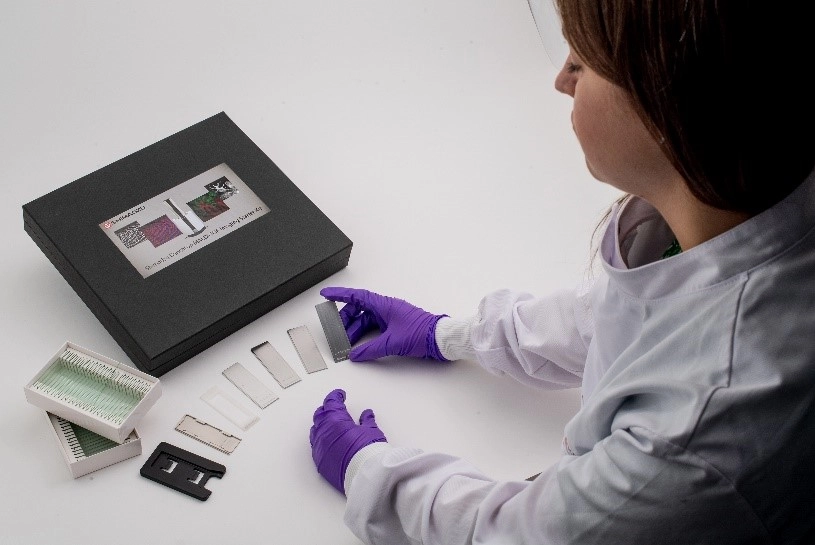
Shimadzu started out by debuting the new Benchtop MALDI-TOF Imaging Station. This system is intended for a broad range of users, from novice to advanced. A setup wizard and easy-to-use software enable ready access to Shimadzu’s advanced imaging technology interface. Features include automated matrix coating options, MS resolution of 5000 m/z, and imaging resolution of 30-50 µm. Imaging starter kits are available to assist in getting up to speed for the full range of applications, including forensics, food safety, and toxicology. The easy access and compact size make field or remote testing possible.
Next on the
technology front was Shimadzu’s breakthrough announcement on the new Oxygen
Attachment Dissociation (OAD) dedicated source. 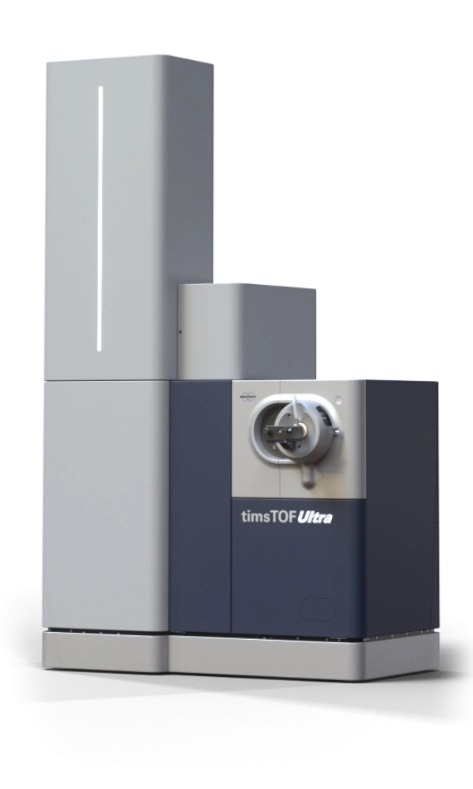 The front-end device can be
switched on in seconds allowing hydroxy-radical atomic oxygen-induced
fragmentation of hydrocarbon double bonds. This technique can be used in
concert with collision-induced dissociation (CID) to add an orthogonal method
for molecule bond characterization. The state-of-the-art OAD technology has
been reported
on but not yet before integrated into a commercial MS system. Early
applications include lipidomics and food safety testing, although one can
foresee use in the polymer and petroleum industries as well.
The front-end device can be
switched on in seconds allowing hydroxy-radical atomic oxygen-induced
fragmentation of hydrocarbon double bonds. This technique can be used in
concert with collision-induced dissociation (CID) to add an orthogonal method
for molecule bond characterization. The state-of-the-art OAD technology has
been reported
on but not yet before integrated into a commercial MS system. Early
applications include lipidomics and food safety testing, although one can
foresee use in the polymer and petroleum industries as well.
Bruker announced the release of the latest in the timsTOF line. The timsTOF Ultra offers greater sensitivity and coverage than previous platforms with detection of 5 orders of magnitude in protein abundance. In proteomic investigations, over 5,500 protein groups and 55,000 peptides can be resolved with high fidelity (1% FDR). The platform offers open data formats that are agnostic and shareable among mass spectrometrists and scientists. The TIMScore and TIMS DIA software are available for data deconvolution and validation. In addition, conditioned data sets may ultimately have value as training sets in future AI-enabled data interpretation.
SCIEX introduced the Intabio ZT System,
which couples imaged capillary isoelectric focusing (IC-IEF) with LC-MS
separations and mass analysis. 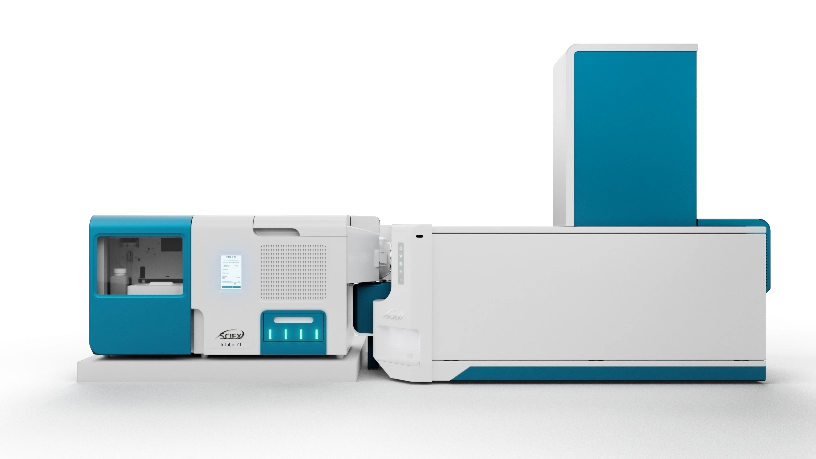 The main focus of this instrument is the fine
characterization of charge variants and post-translational modifications (PTMs)
associated with biotherapeutic antibodies and other proteins. The system uses a
small µL-scale sample size and has the capability to select discrete IEF peaks
for downstream LC-MS analysis.
The main focus of this instrument is the fine
characterization of charge variants and post-translational modifications (PTMs)
associated with biotherapeutic antibodies and other proteins. The system uses a
small µL-scale sample size and has the capability to select discrete IEF peaks
for downstream LC-MS analysis.
Also on display at ASMS, the Zeno TOF platform is positioned for middle-down proteomics and small molecule detection. Applications include critical quality attributes (CQAs) in biotherapeutics, active pharmaceutical ingredients (APIs), as well as PFAS monitoring in environmental testing.
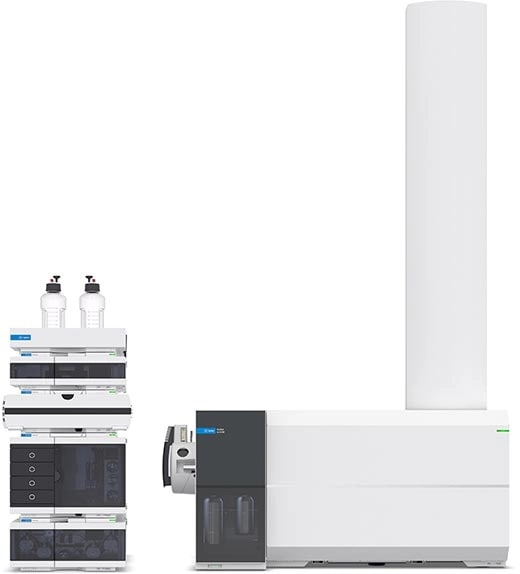 Agilent showcased several upgrades and new
releases this year. The new 6495 LC TQ is designed for high sensitivity with
onboard quantitative and analytical capabilities. Smart features include intelligent
telemetry, smart maintenance functions, SWARM autotuning, carryover monitoring,
calibration range monitoring, and high-throughput hit confirmation. The
elevated sensitivity of the system makes it ideal for perfluoroalkyl substance
(PFAS) monitoring using minimal detectable limits (MDLs) and draft
EPA 1633 methods.
Agilent showcased several upgrades and new
releases this year. The new 6495 LC TQ is designed for high sensitivity with
onboard quantitative and analytical capabilities. Smart features include intelligent
telemetry, smart maintenance functions, SWARM autotuning, carryover monitoring,
calibration range monitoring, and high-throughput hit confirmation. The
elevated sensitivity of the system makes it ideal for perfluoroalkyl substance
(PFAS) monitoring using minimal detectable limits (MDLs) and draft
EPA 1633 methods.
The new Revident LC-QTOF is a modular system with improved optics and detectors. Sensitivity is twice that of standard LC-QTOF instruments with sub-ppm mass accuracy. In addition to the previously mentioned “smart” features, the system can perform suspect screening to identify and rerun samples based on select features in crowded spectra. It can also perform iterative MS/MS where parent peaks are selected and rerun with fragmentation for daughter peak analysis. Applications include food safety testing, environmental testing, and -omics investigations.
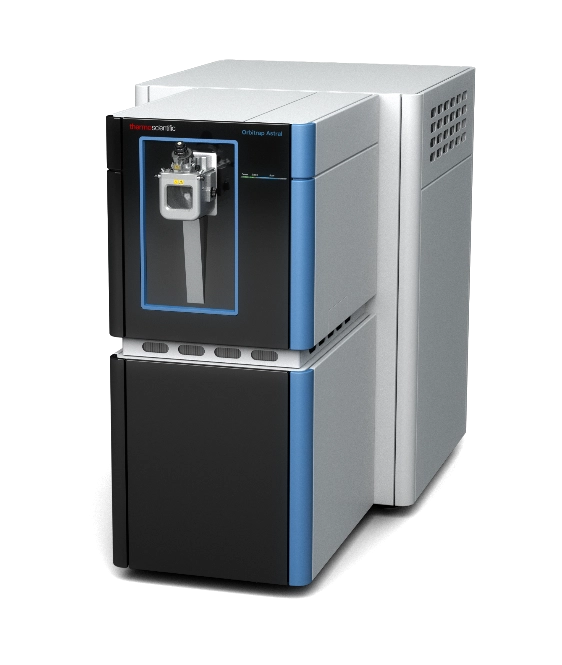 Thermo introduced the Orbitrap Astral
system in addition to other exciting developments. As discussed in more depth
in our
accompanying article, the platform offers faster throughput, deeper
coverage, and higher sensitivity compared with previous Orbitrap instruments.
All of this, in addition to improvements in accuracy and precision
quantitation.
Thermo introduced the Orbitrap Astral
system in addition to other exciting developments. As discussed in more depth
in our
accompanying article, the platform offers faster throughput, deeper
coverage, and higher sensitivity compared with previous Orbitrap instruments.
All of this, in addition to improvements in accuracy and precision
quantitation.
The Orbitrap Astral combines a quadrupole, an orbitrap analyzer, and the novel astral analyzer technology, which work together to achieve greatly improved performance capabilities. During performance validation, over 8,000 proteins can be resolved during an 8-minute run. The system is perfectly matched for single-cell proteomics, with early data showing 5,300 proteins per cell—50% more than previous analysis obtained at twice the speed. The power of the Orbitrap Astral will enable single-cell proteomics researchers to move from model cells to tissue-specific cells, capturing actionable data from diseased and healthy states.
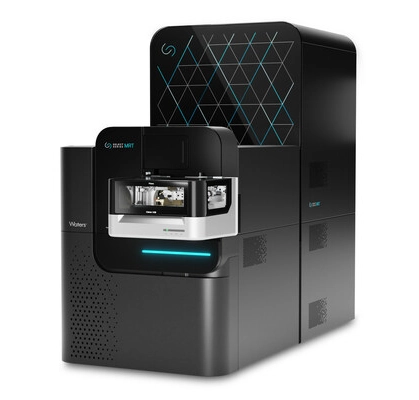 Waters disclosed newly upgraded
improvements to the Select Series MRT platform. The instrument can now reach
300,000 FWHM resolution—a 50% gain—with no loss in sensitivity. The system also
can achieve 3x faster scan speeds regardless of the mode of operation. The MRT,
or multi-reflecting time-of-flight mass spectrometer, is a breakthrough
instrument that achieves extended path length separations with no loss in
sensitivity—an issue previously seen with multi-reflecting TOF systems.
Additionally, the sources can be swapped from electrospray to MALDI or DESI,
enabling a range of applications from metabolomics to high-resolution imaging.
Waters disclosed newly upgraded
improvements to the Select Series MRT platform. The instrument can now reach
300,000 FWHM resolution—a 50% gain—with no loss in sensitivity. The system also
can achieve 3x faster scan speeds regardless of the mode of operation. The MRT,
or multi-reflecting time-of-flight mass spectrometer, is a breakthrough
instrument that achieves extended path length separations with no loss in
sensitivity—an issue previously seen with multi-reflecting TOF systems.
Additionally, the sources can be swapped from electrospray to MALDI or DESI,
enabling a range of applications from metabolomics to high-resolution imaging.
Professor Simona Francese of Sheffield-Hallam University presented compelling data from the MRT system, stating the system’s sensitivity, mass accuracy, and resolution may prove crucial in research involving MS signatures for forensics applications and other high-profile investigations.
Outlook
The mass spectrometry world continues to evolve, breathing life into exciting and new areas of research and industry. True to form, the 2023 ASMS conference showcased innovations in mass spectrometry that shed unprecedented insight into single cells, metabolomics, biotherapeutics, and other high-impact areas.
